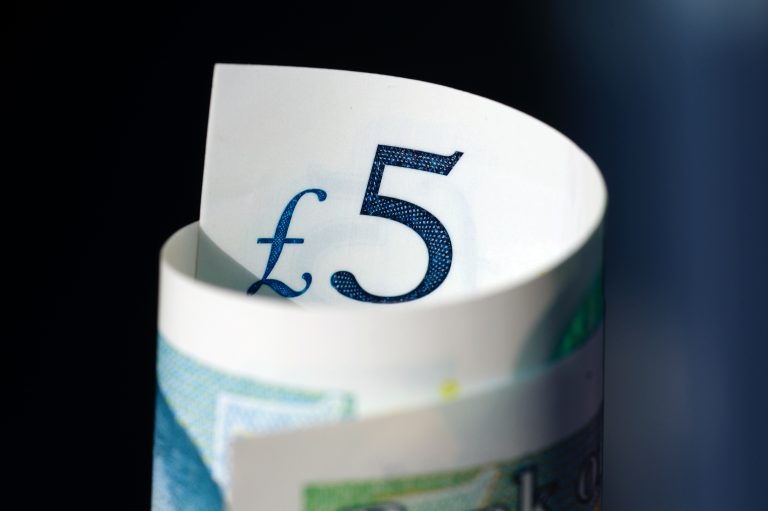- Savings
 SavingsSave regularly, from as little as £5 per month.
SavingsSave regularly, from as little as £5 per month.- Member Account
- Family Member Account
- Junior Account
- Fixed Term Deposit
- Notice Plus Account
- Reserve Account
- Discontinued Accounts
- Loans
 LoansHelping you by offering a range of loans for a variety of purposes, direct from your payroll.
LoansHelping you by offering a range of loans for a variety of purposes, direct from your payroll.- Member Loan
- Consolidation Loan
- Commutation Loan
- Student Officer Loan
- Christmas Loan
- Revolving Credit
- Green Loan
- Loyalty Loan
- 70+ Loan
- Holiday Loan
- Additional Borrowing
- Discontinued Accounts
- Mortgages
 MortgagesHelping the police family to get on and remain on the property ladder.
MortgagesHelping the police family to get on and remain on the property ladder.- Speak to a Mortgage Adviser
- Mortgage Calculator
- How to apply
- Agreement in Principle
- First Time Buyer
- Fixed Rate Mortgages
- Family Assist Mortgage
- Standard Variable Rate Mortgage
- Budget Planner
- Useful Contacts
- Financial Wellbeing
 Financial WellbeingSome of our top tips to help you manage your money even better.
Financial WellbeingSome of our top tips to help you manage your money even better.- Managing Debt
- Representative APR
- Credit Score
- Gambling awareness
- Stop Loan Sharks
- Jargon Buster
- Fraud Awareness
- Family Financing
- Support for your wellbeing
- Let’s Talk About Money newsletter
- Services and Support
 Services and SupportFind more information on the additional services or support we offer.
Services and SupportFind more information on the additional services or support we offer.- Interest and dividend rates
- Lottery
- Life Protection
- Notify us of your retirement
- FAQs
- Annual General Meeting
- About Us
 About UsFind out more about the biggest police credit union in the UK.
About UsFind out more about the biggest police credit union in the UK.- About Us
- Board of Directors
- Mission Statement
- News
- Contact Us
Understanding GAP insurance
Written by: Ben Kirkman
Category: Let's talk about money
Read Time: 5 minutes

| Subscribe to our monthly “Let’s talk about money” newsletters here! |
GAP insurance could save you from an unexpected bill if you needed to make an insurance claim for your car, but is it worth buying this extra car insurance policy? In this article, we’ll give you an overview of what GAP insurance is, how it can benefit you, as well as providing you with the key information to remember if you ever consider purchasing a GAP insurance policy.

- What is GAP insurance?
- Why might you need GAP insurance?
- An example of GAP insurance
- The different types of GAP insurance
- The main exclusions of GAP insurance
- How much does GAP insurance cost and where to purchase it from
- Understanding if GAP insurance is right for you
GAP insurance is an additional insurance policy that you can purchase on top of your standard car insurance policy. It covers you in the event of having to make an insurance claim by protecting the difference between the value of your car at the point of which your car is stolen/written off/declared a total loss, and the value of your car when you bought it. As cars tend to devalue over time, this is where the cost difference often occurs when you need to make a claim.
For individuals who are considering purchasing or have purchased a car using a finance agreement (such as a personal contract purchase, leasing, hire purchase or a personal loan), gap insurance could be worth considering as you are still liable for the cost of the credit even though you may no longer have the car. Although you can still purchase GAP insurance even if you purchased it outright.
Why might I need GAP insurance if I’ve bought or intend to buy a vehicle on a finance agreement?
On average a car will lose 50% of its original value in 3 years and will continue to depreciate over time which is why GAP insurance generally runs for a 3-year period although this can often be extended. This means that in the event of a claim your vehicle will most likely be lower in value than the amount needed to settle your vehicle’s finance agreement.
If you were to buy a new car for £30,000 which was involved in an accident within the first year, your car insurance provider might only pay £25,500 as the ‘total loss’ payment.
- If you did not have a GAP insurance policy, you would have to fund the £4,500 difference between the ‘total loss’ car value and the finance agreement.
- If you had a GAP insurance policy such as a ‘return to invoice’, you would expect to receive £30,000 in total as a ‘total loss’ payment. This ensures that your finance agreement has been settled without you having to use any of your own money to cover the £4,500 difference.
Please note: The example used above is a simple explanation of one type of GAP insurance. Please be aware insurance providers could reimburse drivers differently dependent on the type of GAP insurance policy taken.
The different types of GAP insurance explained
GAP insurance can be broken down into six main categories of the following:
- Return to invoice GAP insurance tops up a ‘total loss’ payout to the amount you bought a vehicle for.
- Return to value GAP insurance pays the difference between a standard ‘total loss’ payment and the value of the car when it was first purchased.
- Vehicle replacement GAP insurance pays the difference between a standard ‘total loss’ payment and the value of a new car.
- Finance GAP insurance covers outstanding loan payments on a car but typically won’t include negative equity.
- Negative equity GAP insurance covers those extra costs on a finance deal that occur when you borrow more money than the cost of your car.
- Lease GAP insurance pays the rest of your contract on a lease deal and any extra fees for ending your agreement early.
(Source RAC,2023 https://www.rac.co.uk/drive/advice/insurance/what-is-gap-insurance/)
The key information you should consider
Not all insurance claims will result in a GAP insurance payout as it depends on a variety of factors including the severity of damage done to your vehicle. To claim on a GAP insurance policy, your car insurance provider must deem the vehicle a ‘total loss’, also known as a write-off.
While GAP insurance is useful for some individuals, please be aware that exclusions do apply depending on the type of policy you have and the company you have taken the policy out with. Below, we have detailed some of the main policy exclusions but please spend time checking your own policy’s terms and conditions to ensure you do not invalidate your policy.
The main exclusions:
- You are on a third-party, fire or theft policy
- The vehicle is worth more than £75,000
- The vehicle has done more than 100,000 miles when the policy was purchased
- The vehicle is over a certain age
- The vehicle is being used for hire or taxi services. Please be aware you will require a special GAP insurance policy that is suitable for this sort of vehicle usage.
- The vehicle has had modifications. E.G., large exhausts, sport spoilers. Click here to read the RAC’s car modification guide.
(Source, RAC,2023)
In accordance with the RAC, GAP insurance typically costs between £100 and £300 for three years of cover. One of the features of GAP insurance is that you can purchase multiple years of coverage for your vehicle in one go. This can be useful for some individuals who know that they will be keeping a vehicle for a couple of years.
Where to buy GAP insurance:
- Dealerships
- Insurance providers
- Finance and leasing companies
- Banks
- Insurance brokers (indirectly)
Is GAP insurance right for me?
Understanding if GAP insurance is right for you is ultimately up to you to decide. The following list of questions below by The Association of British Insurers can help you reflect on your situation helping you to consider the best course of action to take.
- When will the policy start and how long it will last?
- Is there a time limit within which I must claim a total loss?
- What is excluded from the policy?
- What is the market or retail value of my vehicle?
- Many GAP insurance policies refer to ‘market value’ when calculating claim
- payments, so it is important to understand what this means.
- If I sell my vehicle, can I transfer my policy to the new car?
- Can I cancel my GAP policy?
(Source, Association of British Insurers,2023)
While this article has given you an overview of GAP insurance, please do independent research on this topic if you are considering taking out a GAP insurance policy. Each company will have their own unique terms and conditions for their policy, and it is critical to ensure you are aware of this.
| Subscribe to our monthly “Let’s talk about money” newsletters here! |
Written by,
Benjamin Kirkman
Marketing Officer











